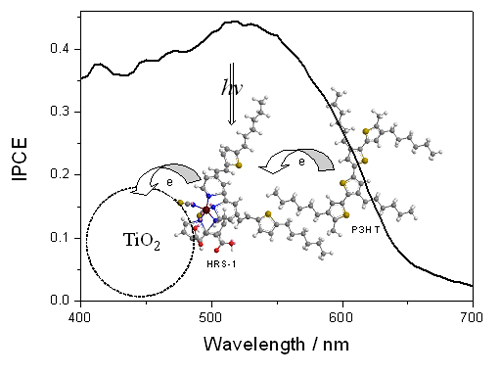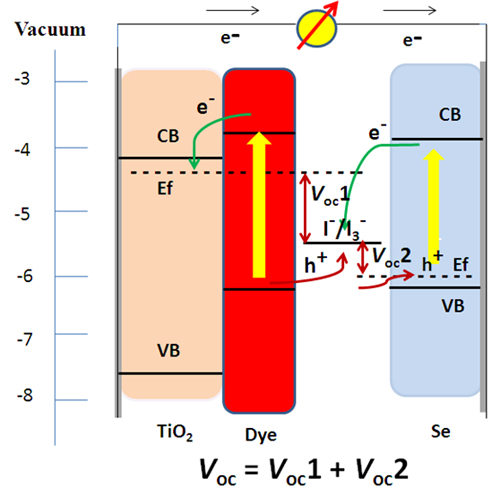Dye-sensitized solar cells have received widespread attention because of their wide range of material sources, low cost, and high photoelectric conversion efficiency. With the support of the National Natural Science Foundation of China, the Ministry of Science and Technology and the Chinese Academy of Sciences, relevant researchers in the New Materials Laboratory of the Institute of Chemistry have achieved a series of results in the research on dye-sensitized solar cells.
Dyes are a key component of dye-sensitized solar cells. Researchers of the New Materials Laboratory, through the design and synthesis of material structures, have worked with bipyridine ruthenium dyes (Inorg. Chimica. Acta., 2008, 361, 783-785; Chem. Commun., 2006, 2460-2462), organic dyes (Chem . Asian J., 2010, 5, 1911-1917; Dyes and Pigments, 2010, 87, 249-256; Chem. Commun., 2009, 2201-2203) and inorganic quantum dots (Chem. Commun., 2011, 47, 6461-6463) and other studies have made important progress.
In order to solve the effect of electrolyte corrosion and liquid leakage on the long-term stability of the battery, they conducted research on solid dye-sensitized solar cells based on poly 3-hexylthiophene hole transport material. The research results were published in Adv. Funct. Mater., 2009, 19, 2481-2485 and Chem. Commun., 2011, 47, 6461-6463, and were invited to participate in Dye at the invitation of Professor M. Grätzel, inventor of the dye-sensitized battery. Preparation of Sensitized Solar Cells (EPFL Press, ISBN 9-781-4398-0866-5).
In order to improve the full utilization of the solar spectrum by dye-sensitized solar cells and effectively capture photons of different wavelengths in the solar spectrum, they proposed the concept of constructing a stacked battery composed of a dye-sensitized photoanode and an inorganic semiconductor selenium photocathode to realize a single battery "Series connection" overcomes the complex process and efficiency reduction usually caused by simple series superposition of batteries, and the open circuit voltage of the prepared single battery reaches 940 mV. The above research provides new ideas for further improving the photoelectric conversion efficiency of dye-sensitized solar cells. The research results were published in the recently published German "Applied Chemistry" (Angew. Chem. Int. Ed., 2012, 51, 10351-10354 ).

Fig. 1 Solid dye-sensitized solar cell based on poly 3-hexylthiophene hole transport material

Figure 2 Dual-active dye-sensitized photoanode and semiconductor selenium photocathode stacked battery
Camping Mess Kit,Camp Pot,Camping Cookware,Outdoor Cookware
Xianke Metal Products Factory , https://www.stainlessbarware.com